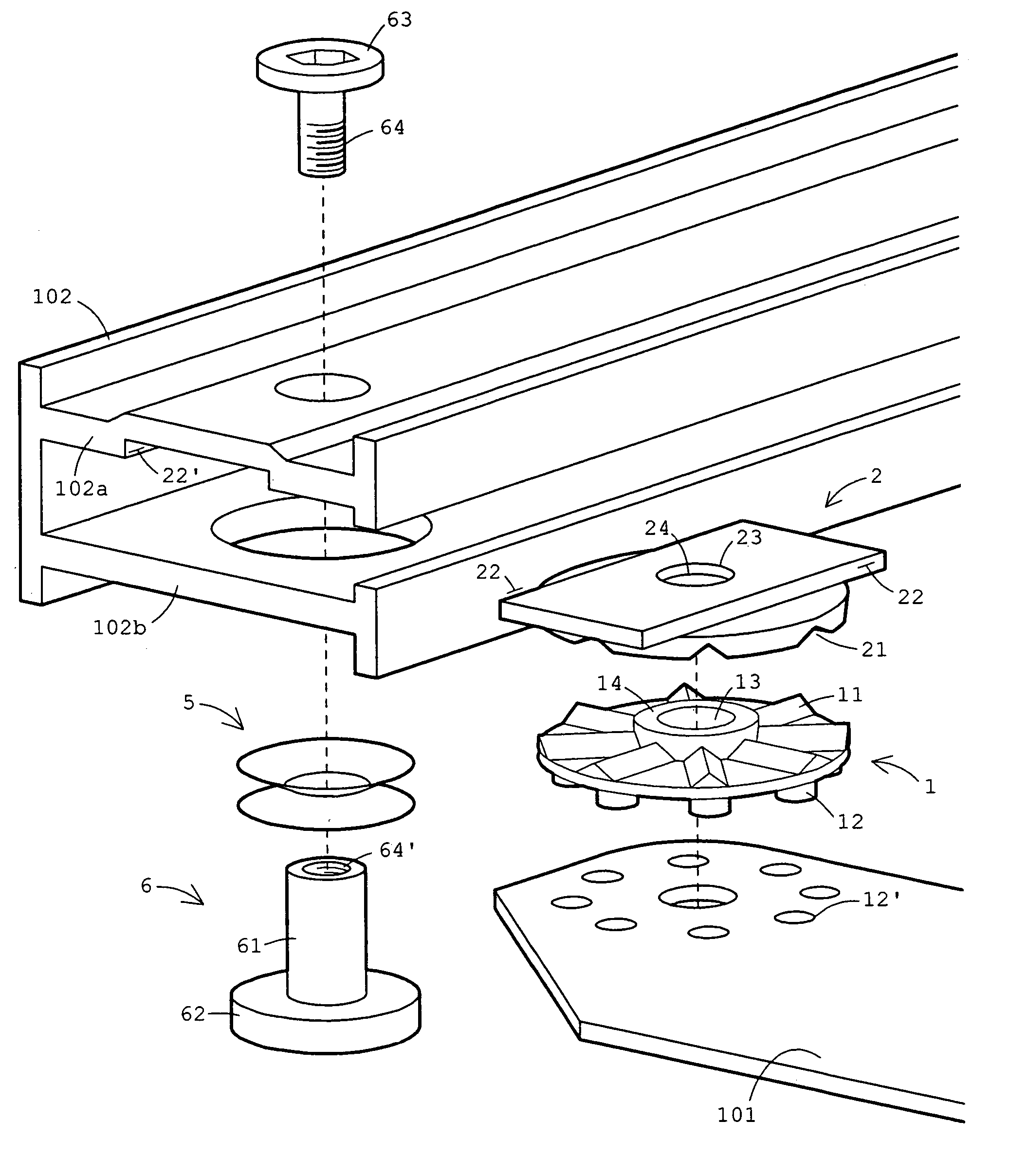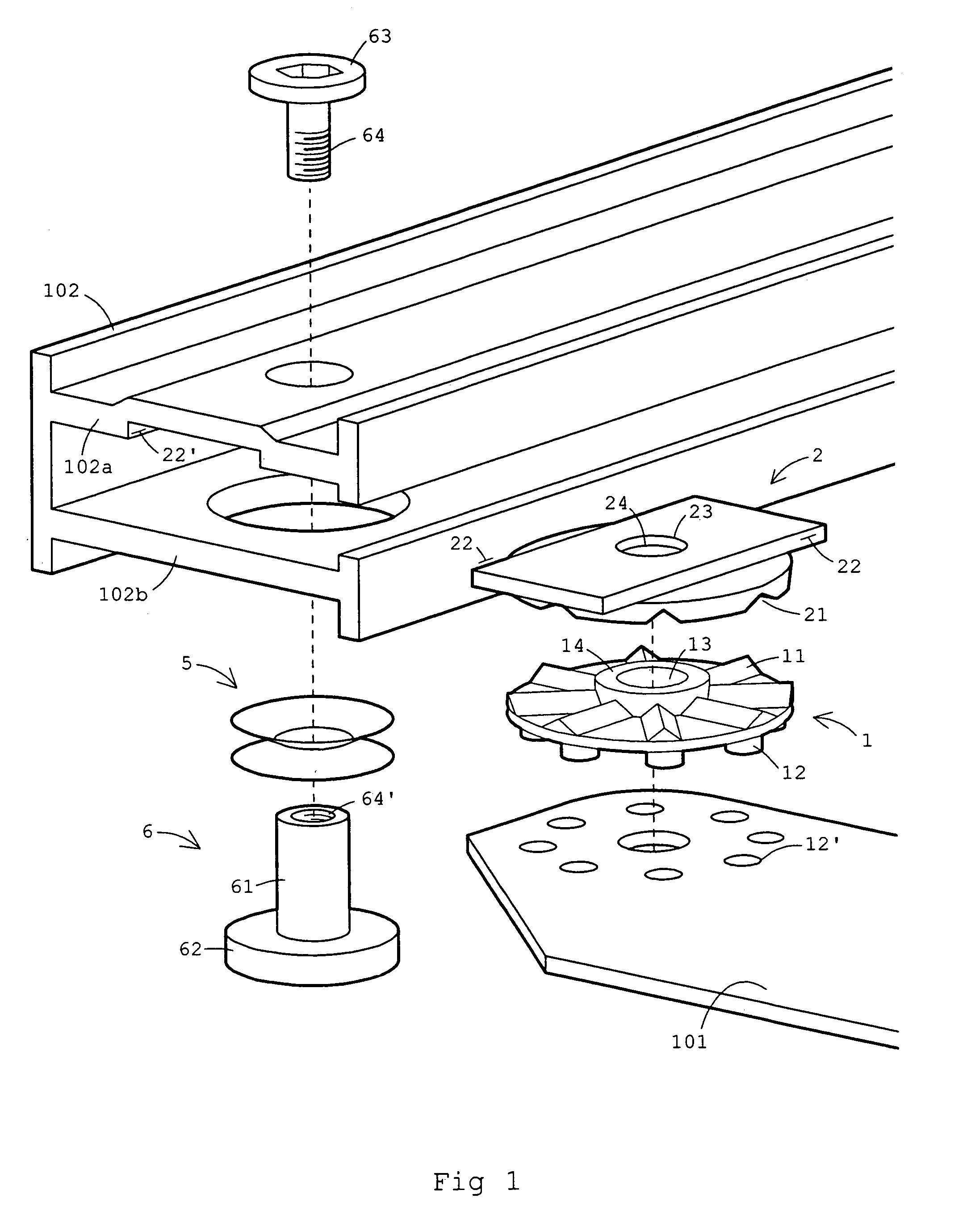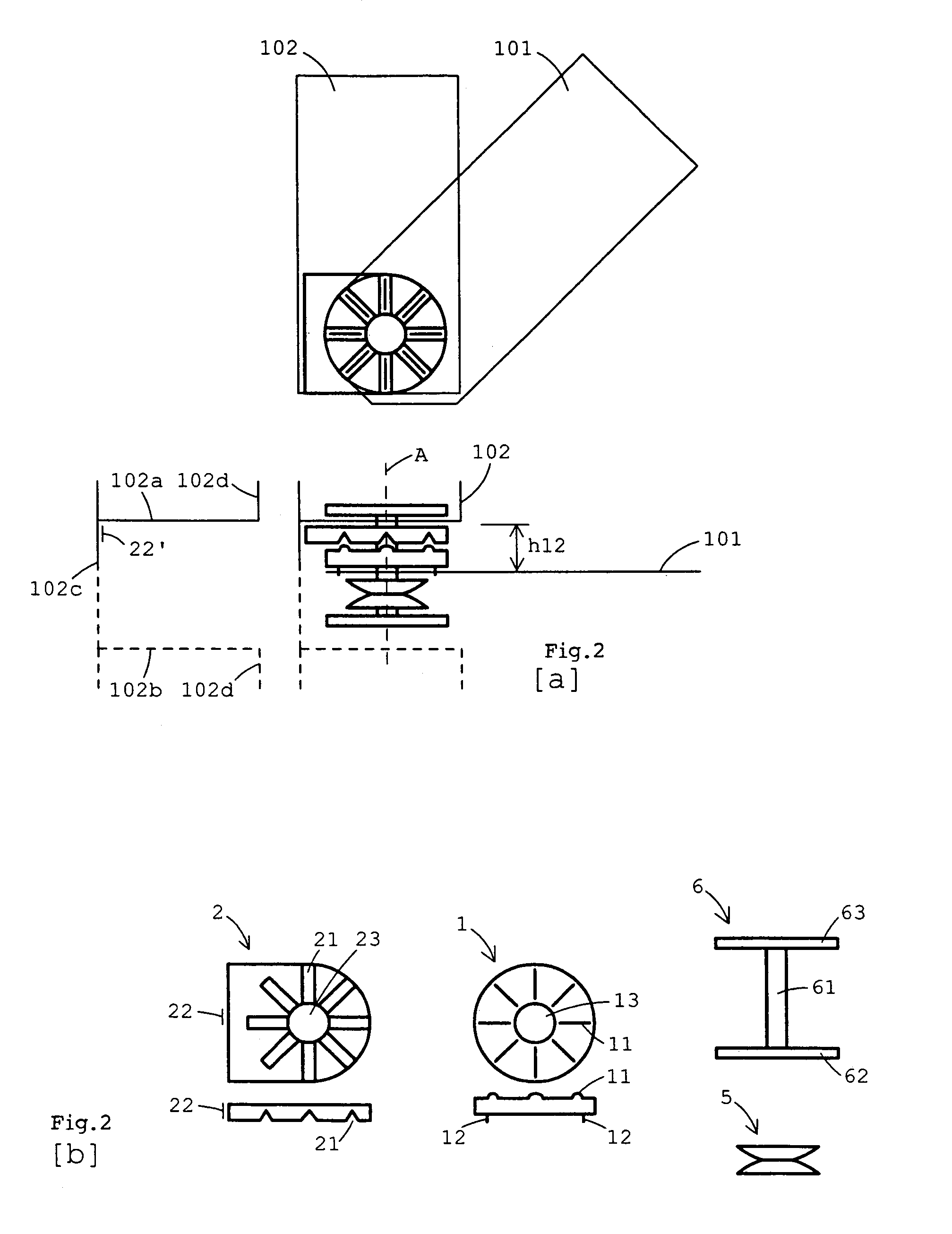Snap locking angle adjustable device, in particular a carpenter's square
a carpenter's square and adjustable technology, applied in the direction of couplings, printing, instruments, etc., can solve the problems of blade and handle snapping lock, difficult to fabricate the square with maintained angle precision, and thinner metal bridge between neighbouring holes
- Summary
- Abstract
- Description
- Claims
- Application Information
AI Technical Summary
Problems solved by technology
Method used
Image
Examples
first embodiment
[0072]An embodiment of the invention is illustrated by an exploded view in FIG. 1 and by a schematic drawing in FIGS. 2a and 2b. Consider first the plate (1) in FIG. 1: the plate has ridges (11) on its upper face and pins (12) on its lower face. Assembled, the pins (12) fit tightly in the holes (12′), thus securing the plate (1) to the blade (101). Next, consider the plate (2): this plate has grooves (21) on its bottom face and a rectangular body with edges (22) on its upper face. Assembled, the rectangular body with the edges (22) fits tightly in the channel with the walls (22′), thus securing the plate (2) to the handle (102). Now, the plate (2) may put on top of the plate (1) in a manner such that the ridges (11) mate with the grooves (21). Assembled, the elements (5, 101, 1, 2, 102a) forms a sandwich squeezed between the heads (62) and (63). This is schematically shown in FIG. 2a. The upper screw (63, 64) and the lower, internal threaded, screw (61, 62, 64′) are tightened togeth...
second and third embodiments
[0073]Two other embodiments are illustrated in FIGS. 3a and 3b. First, as a matter of notation, the graphic symbols for the elements (5), (1), (2), (62), and (63) are the same as in FIG. 2b. Now, the embodiment shown in FIG. 3a is characterized in that the components (102b, 5, 101, 1, 2, 102a) forms a sandwich squeezed between the heads (62) and (63). Notice further that, because the spring washers rest upon the lower face (102b) of the handle, the hole in (102b) can be fabricated smaller than the corresponding hole in FIG. 1. As a result, the holes in (102a) and (102b) may be punched to the same small size. Notice also that the components may be assembled differently compared to the square in FIG. 1: the handle (an aluminum profile in this case) may need to be separated slightly (indicated by the left drawing) before inserting the components (5, 101, 1, 2).
[0074]Next, the embodiment shown in FIG. 3b, on the other hand, is characterized by the following. Only the components (5, 101,...
fourth embodiment
[0075]A fourth embodiment is described by means of the schematic drawings in FIGS. 4a–4c and FIGS. 5b and 5b. As a matter of notation: the graphic symbols for the elements (5), (62), and (63) are the same as in FIG. 2b. Now in this example illustrated by FIGS. 4a, 4b, 4c, 5b, the addition of the elements (3) and (4) is the main difference to the previous three examples. To understand the function of the whole device, notice that the plates (2) and (4) follows the handle's rotation, while the plate (1, 3) follows the blade's rotation around the pivot axis (A). Also understand that the sandwich (5, 4, 3, 101, 1, 2, 102a) is squeezed between the heads (62) and (63). Therefore, and due to the surface structures (21, 11, 31, 41), the amount of compression experienced by the spring washers (5) will vary with the rotational angle between the handle and the blade. This is qualitatively illustrated in FIG. 5b. The dependence of the spring force (F) on the angle (φ), may be compared with the ...
PUM
 Login to View More
Login to View More Abstract
Description
Claims
Application Information
 Login to View More
Login to View More - R&D
- Intellectual Property
- Life Sciences
- Materials
- Tech Scout
- Unparalleled Data Quality
- Higher Quality Content
- 60% Fewer Hallucinations
Browse by: Latest US Patents, China's latest patents, Technical Efficacy Thesaurus, Application Domain, Technology Topic, Popular Technical Reports.
© 2025 PatSnap. All rights reserved.Legal|Privacy policy|Modern Slavery Act Transparency Statement|Sitemap|About US| Contact US: help@patsnap.com



